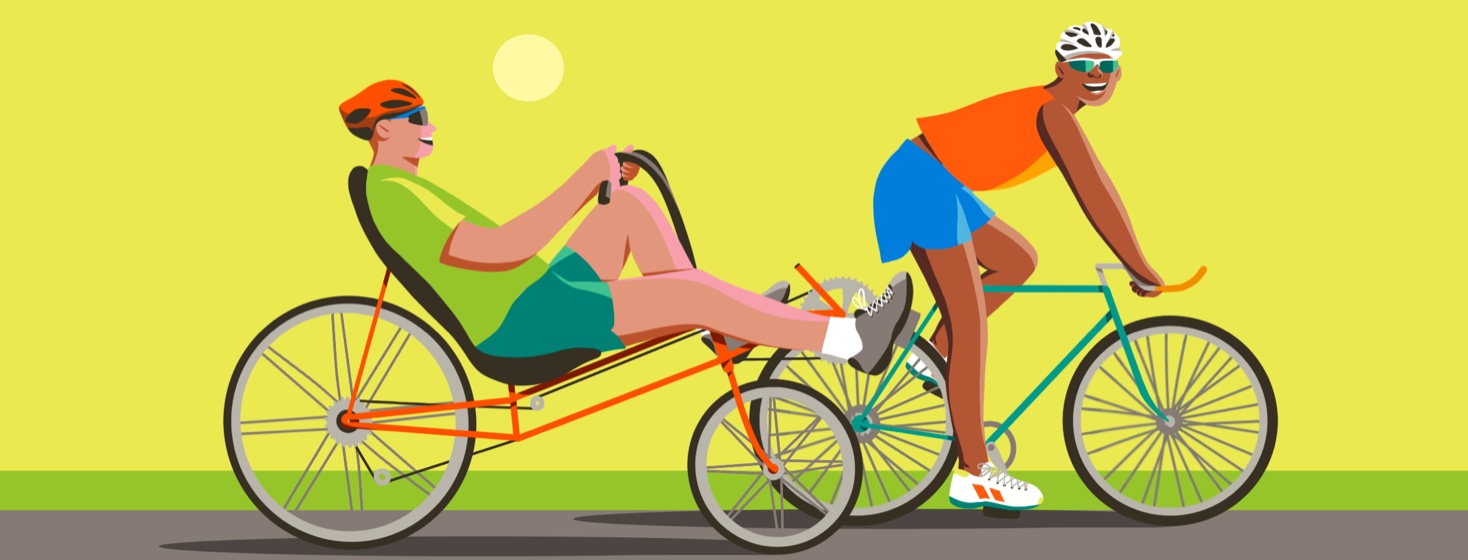Physical Activity Helps To Reduce My Leg Pain
Saturday afternoon, I realized something extraordinary. I woke up that morning NOT in pain. I tried to remember when the last day was that I hadn’t experienced pain in my legs before dawn.
Too many days ago was my answer to my own question.
Pain is a known MS symptom
No denying that pain can be associated with multiple sclerosis. It was once thought that pain was not a feature of MS, but now the field of neurology is better educated. A simple search on pubmed.gov using the terms “multiple sclerosis pain” offers up more than 3300 research articles that touch on the issue in one way or another.
Different types of MS pain
Amongst these studies on pain and MS, I found an interesting paper published in the Journal of Neurology that suggested new ways to characterize the different types of pain associated with MS based on their underlying mechanism or cause.1 Authors devised a system with 5 categories of pain associated with MS—neuropathic pain, nociceptive pain (or inflammatory pain), psychogenic pain (or somatoform pain), idiopathic pain, or mixed pain.
My experience with neuropathic pain
When I experience strange pins and needles sensations in my hands or buzzing throughout my body, I don’t necessary call these sensations painful. These paresthesias are odd indeed, but do not interfere with my ability to function normally.
In contrast, when it has felt like an elephant was standing on my face, I would characterize that abnormal sensation as painful and disruptive to my ability to concentrate and focus. When this sensation was at its worse, my neurologist prescribed medication to help dull the pain. At one point, I was taking near the maximum dosage to be able to function. Eventually, I worked with my doctor to slowly reduce the dose and come off the medication entirely.
My experience with nociceptive pain
Nociceptive pain can include many different types of pain including those associated with optic neuritis (which I’ve had), musculoskeletal pains secondary to postural abnormalities, headache, migraine, and treatment-induced pains. One of my first big MS attacks was a blinding case of optic neuritis. I definitely experienced the intense pain felt behind my eyes. At the time, I had no idea what to call this pain besides PAIN!!!
No stranger to musculoskeletal pain
As someone who lives with rheumatoid arthritis and osteoarthritis (OA) in addition to MS, I am familiar with musculoskeletal pain. The inflammatory nature of this type of pain comes directly from the diseases themselves. I feel this pain mostly in my knees and hands. There have been times that the pain from OA in the knees has been so bad that I’ve had to sleep in a recliner with lots of pillows keeping me in a very specific position to minimize the pain and to be able to get some sleep.
My experience with mixed pain
More common types of mixed pain in MS would include pain caused by tonic spasms and pain caused by spasticity. Painful tonic spasms affect about 6 to 11% of the population with MS, primarily in those with progressive forms of the disease. Spasticity pain affects less than 50% of those with MS. I am one of those less than 50%.
Mixed pain from spasticity can be secondary to lesions in the corticospinal tract that result in an enhanced tonic stretch reflex (which feels like your muscles are trying to pull in opposite directions). That excessive muscular activity in turn triggers nociceptive pain receptors, similar to musculoskeletal pain.
There have been times that it feels like the spasticity in my hamstrings and calf muscles is pulling on the ligaments and tendons that support my knee joints. This may not technically be the case, but it FEELS like it at times. As we all know PAIN IS PAIN; when we are in the middle of it, we don’t really care so much what is causing it, we just want it to be gone.
Putting it all together
What I have been experiencing lately is a combination of factors. During the day, I know that my spasticity has been acting up. Thoughtful stretching of the backs of my legs reveals that the muscles are shortened and don’t want to let loose. The two medications I take for spasticity are helping, but are not always 100% effective.
When I try to straighten my knees all the way and when I walk on the stairs, my knees have begun to “click” again. This is due to OA. When I massage the muscles in my legs or the tissues around my knees, I can feel how tender and painful the tendons and ligaments are that cross over and around my knees.
I suspect that the pulling of the muscles is aggravating inflammation in the soft tissues. A combination of gabapentin and NSAIDs help to reduce some of these pains, but again they are not 100% effective.
What did I do differently this week?
One thing that has been different lately is that much of the last month, I was not able to go out cycling as much as I had been previously. Exercise helps to reduce pain, spasticity, and inflammation for me. This past week I was able to do out cycling on Tuesday and Wednesday. It wasn’t comfortable and I felt pain while doing so, but afterward the increased circulation, gentle movements, increased range of motion, and reduced inflammation helped to reduce the pain. Friday, my husband and I took a short walk within the neighborhood.
I believe that being more physically active helped to reduce the mixed pain I had been experiencing in recent weeks. Today, I awoke with a slight increase in pain so I think I will try to take a short walk before it starts raining.
What do you do when your legs hurt? Is there a combination of approaches you take?
Be well,
Lisa
Read my other articles on MultipleSclerosis.net

Join the conversation